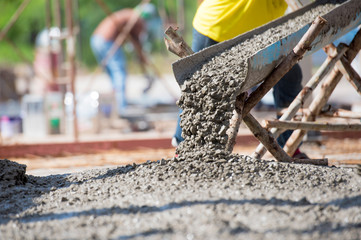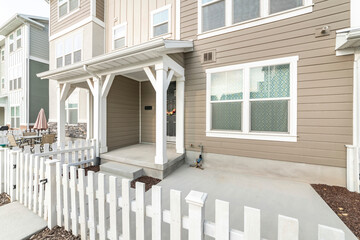Over time, the heavy weight of vehicles and natural elements can shorten your driveway’s lifespan. Cracks, holes, discoloration, and sunken sections can reduce its structural integrity and curb appeal.
Small cracks less than 1/4 inch wide don’t pose a structural threat and can be filled using asphalt repair tubing that is inserted into the crack and heated with a torch. This is a temporary solution that will likely need repeated repairs. If you need assistance from experts, contact Driveway Repair Charles Town WV now!
While cracks are inevitable in any driveway, they can be an indication of serious underlying problems and should not be ignored. Even if they don’t seem to be causing any major issues, they should be repaired to prevent further damage or a trip hazard for your family and guests.
Fine surface cracks, also known as crazing, appear soon after a concrete driveway is poured and are typically narrower than 1/2 inch wide. While unsightly, these fine cracks do not indicate any structural issues and can be filled with a high-quality, polymer concrete crack filler.
Cracks that are wider than the width of a credit card and run the length of the driveway should be repaired as they can cause drainage problems. Water will seep into these cracks, freeze and expand, which causes them to widen even more. To patch these cracks, first clean out the area and fill them with concrete repair product such as Quikrete’s Concrete Crack Filler or a masonry crack elastomeric filler to match the color of your existing driveway.
Driveway cracks can be caused by a number of factors, including ground movement, aging of the asphalt or concrete, sun exposure and soil conditions. It’s best to keep the driveway trimmed and edging in good condition to prevent the ground from shifting underneath the surface.
Another problem is tree roots, which can push up against and heave the driveway slab. It is recommended to remove or plant trees well away from the driveway to help prevent these problems.
Lastly, a common cause of driveway cracks is poor installation, which can lead to moisture penetration, shrinkage and structural failure. It’s always a good idea to have a professional evaluate the situation and make any necessary repairs. A qualified contractor can determine the cause of the cracks, whether it’s a subbase issue or a problem with the base material and correct the issue accordingly. This will ensure that the cracks don’t continue to grow and may potentially lead to a collapsed driveway.
Holes
If your driveway has small cracks and holes that don’t pose any structural threat, you can use patching material to repair them. This is a relatively simple DIY project, but it’s important to do a thorough job and make sure the new material bonds well with the old surface. Otherwise, it won’t hold and will be displaced by traffic. The first step is to thoroughly clean the damaged area to be repaired. This includes removing all dirt, weeds and debris. Also, apply an asphalt bonding additive or concrete sealer to prevent water from seeping in and weakening the new surface.
Once the affected area is prepared, you can fill the cracks or potholes. For narrow cracks, use a driveway crack filler that is compatible with the material used to construct your driveway. To create a stronger, longer-lasting repair, heat the crack before applying the filler. This softens the existing pavement, making it easier to fill and helps the new material adhere to it.
Larger cracks or holes, spalling (horizontal peeling or chipping of the surface), and discoloration in your driveway can be covered with a concrete overlay, which is like a thick layer of cement that you can stamp or color to hide the original damaged surface. Unlike patching, this solution allows you to give your driveway a custom look and feel.
Driveway sinkholes are another major challenge, especially if they’re on the edge of your property or in front of your home. These deep holes may be the result of a faulty drain pipe, ground movement or tree roots. They can be difficult to repair because you have to dig down to the original level of the slabs.
To fix shallow sinkholes, start by removing any vegetation and digging up the old fill. Use a shovel or power harrow to break up the surface of the hole and remove any debris. Then, use a tamper to pack the soil back down and compact it. For deeper sinkholes, you’ll need to excavate the bad section of your driveway and add base gravel to reduce its depth.
Sunken Sections
Over time, driveways are subjected to a wide variety of forces that cause them to shift and settle. Sunken sections of concrete can become a safety hazard if left untreated. They are also unsightly and can give your home a sloppy look. Fortunately, there are several ways that you can raise sunken areas of your driveway to bring them back up to the level of the rest of the surface.
Depending on the severity of the problem, you may be able to perform some or all of the repair yourself. For example, small hairline cracks can often be repaired using a driveway filler that you can purchase at most hardware stores. These products are relatively easy to use and can be spread evenly across the affected area with a putty knife or trowel.
Other repairs are more involved and will likely require the help of a professional. If your driveway is uneven because of soil changes or tree roots, for instance, you might need to have the surrounding area regraded or have a drainage system installed. And if weeds or other plants are growing in between the cracks, you might need to have them removed and replaced.
For more serious issues, it is usually best to call in a professional for concrete lifting services. Rather than drilling holes through the concrete like in the mudjacking method, experts use a refined method of raising driveways that uses polyurethane foam. This process drills much smaller holes and injects liquid polyurethane beneath the sunken section of concrete. The polyurethane foam expands into the loose, weak soils and aggregates them into a denser subgrade that raises the sunken section of the driveway.
Another advantage of this method is that it doesn’t leave a mess, as mudjacking does. If you’re considering this option for your driveway, be sure to ask your contractor how they plan to clean up the mess after the work is completed. It’s important that the area is cleaned thoroughly to ensure that the repair material adheres properly and that it does not interfere with future maintenance.
Rough Edges
Asphalt driveways are different from concrete ones in that the installer doesn’t have as much control over how the edges will be formed. Using a paving machine makes the process very fast and efficient, but it also results in less-than-perfect edges. In many cases, these are left exposed and susceptible to chipping, cracking and more. While it is relatively easy to patch asphalt cracks when caught early, it is nearly impossible to repair cracked or crumbling edges without solid asphalt on both sides of the damaged area.
To prevent this type of damage, a professional should address how the edges will be finished during the installation process. An honest and reputable contractor will take the time to finish the asphalt edges correctly and ensure that they are not subjected to excessive stress. An unethical contractor may not do so, leaving you with a costly maintenance issue that is difficult and time-consuming to repair.
Regardless of the material used to edge your gravel driveway, it is important that it be a hard landscape substance that can transition from the pavement to the surrounding soil. This will help the driveway resist the stresses of vehicles driving and parking along the edge and also provide a strong support structure in the event that the gravel begins to shift underneath the surface.
One of the most common ways to edge a driveway is to use strip edging. This is inexpensive, easy to install and works well in most landscaping situations. However, it is not as aesthetically pleasing as other options and can be susceptible to washout in heavy rainfall.
Another option is to use masonry edging. This provides a more elegant look for the gravel driveway and can be set into the ground rather than being laid on top of it like other types of edging. Masonry edging is also more durable than strip and can be more resistant to weathering, rot and pests.
Finally, some homeowners prefer to use Belgian blocks to border their driveways. These square blocks, first brought to these shores as ballast in the bellies of colonial ships, add a touch of distinction and provide a firm barrier that prevents grass from growing over and under the asphalt. To install them, snap a line on the pavement with chalk and then use a cold chisel and 3-lb. sledgehammer to slice away the excess asphalt and create a crisp boundary.


